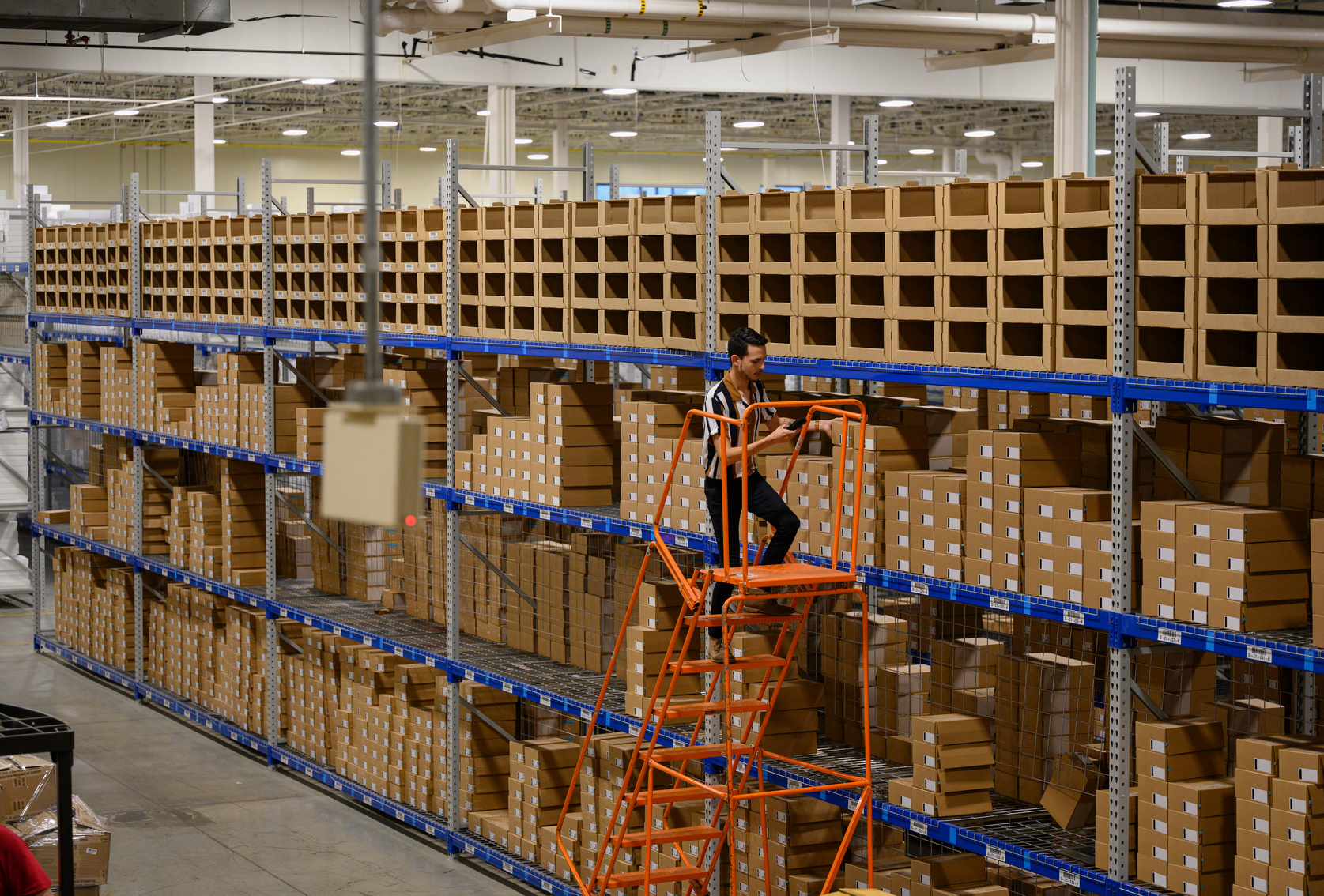In the fast-paced world of e-commerce and retail, shipping isn’t just a logistical function—it’s a crucial element of the customer experience and a significant driver of business success. As consumers increasingly turn to online shopping for convenience, their expectations for quick and cost-effective delivery have soared. These expectations make the efficiency of shipping operations a critical component not only in fulfilling orders but also in shaping the overall perception of a brand. It’s more crucial than ever for brands to get their shipping dialed in, as shipping composes over 90% of total fulfillment cost.
The speed at which products are delivered and the cost of shipping them directly influence customer satisfaction. A positive delivery experience enhances customer loyalty, encourages repeat purchases, and generates favorable reviews, all of which contribute to sustained business growth. Conversely, high shipping costs and slow delivery times deter potential purchases, increase cart abandonment rates, and tarnish a brand’s reputation. Thus, understanding and optimizing these aspects of shipping significantly impact a company’s profitability and market position.
In this blog, we’ll explore the dynamics of shipping speed and costs, examining their role in brand development and margin enhancement. We will also discuss strategies to balance these factors effectively, ensuring they contribute positively to your business objectives.
Understanding Shipping Costs
Shipping costs are a significant expenditure for any business that distributes physical goods. They encompass various elements, each contributing to the total expense incurred from the moment an order is placed to when it is delivered. Understanding these components is the first step in devising strategies to minimize costs while maintaining service quality.
Breakdown of Shipping Cost Components
- Carrier Fees: These are charges by the shipping carriers for the actual transport of goods from your warehouse to the customer’s doorstep. The fees vary depending on the weight, dimensions, and distance the package needs to travel, as well as the speed of delivery.
- Packaging: Adequate packaging is essential to protect goods during transit but comes at a cost. This includes the cost of boxes, padding, tape, and occasionally specialized materials for fragile items.
- Handling: These are costs associated with the labor and processes involved in preparing an item for shipment. Handling costs include the picking, packing, and sorting of products, as well as the administrative work related to processing orders.
- Fuel Surcharges: Often overlooked, fuel surcharges fluctuate based on current fuel prices and significantly affect shipping costs, especially for long-distance and international shipping.
- Duties and Taxes: For international shipping, duties and taxes are a substantial part of the cost, influenced by the type of product, its value, and the country of destination.
Strategies to Reduce Shipping Costs
- Negotiate with multiple carriers: Regularly seek and compare quotes from various carriers to ensure competitive rates.
- Optimize packaging: Use the minimum size and amount of material necessary for safety to reduce weight and waste.
- Increase order processing efficiency: Streamline your warehouse operations to reduce labor costs associated with handling.
- Consolidate shipments: Whenever possible, consolidate orders to reduce the number of trips required.
- Use hybrid shipping services: These services combine the efforts of multiple carriers to optimize cost and delivery time.
Case Studies of Effective Shipping Cost Management
- Amazon: By investing in its logistics network and fulfillment centers strategically placed around the globe, Amazon has slashed costs per package and shortened delivery times, which has been central to its promise of quick deliveries at low costs.
- Zappos: Known for free returns and shipping, Zappos integrates efficient warehousing and inventory management systems to manage these costs, proving that customer satisfaction and cost efficiency go hand in hand.
- Warby Parker: This eyewear company reduces shipping costs through a direct-to-consumer model that eliminates middlemen. Additionally, their Home Try-On program consolidates multiple product trials into a single shipment, which cuts down on individual shipping instances.
The Role of Shipping Speed in Brand Growth
In today’s competitive market, the speed of shipping is not just a logistic concern; it’s a critical factor in branding and customer retention. Rapid delivery times have evolved from a luxury to an expectation for many consumers, particularly in industries where immediate product access enhances the consumer experience.
Consumer Expectations for Delivery Times
Modern consumers are accustomed to an environment where instant gratification is the norm. Studies have shown that a significant percentage of online shoppers expect fast delivery, with many willing to pay premiums for same-day or next-day delivery services. Recent research shows that 23% of all abandoned carts occur because shipping time is too long. This expectation puts immense pressure on businesses to not only meet but exceed these delivery time frames to stand out in a crowded marketplace.
Enhancing Brand Reputation with Faster Shipping
Fast shipping directly influences how consumers perceive a brand. It signals efficiency, reliability, and customer-centricity. Brands that consistently deliver products quickly build a reputation for being dependable, which is invaluable in attracting and retaining customers. Moreover, fast delivery times are a deciding factor for customers choosing between competitors, making it a critical lever for conversion and customer loyalty.
Real-World Examples of Enhanced Market Share Through Fast Shipping
- Domino’s Pizza: Domino’s revolutionized the food delivery industry by focusing on the speed of its delivery, famously promising pizza at your door in 30 minutes or less. This commitment not only enhanced their brand’s reputation but also set a new standard for delivery in the food service sector.
- ASOS: The online fashion retailer offers a variety of fast shipping options, including next-day delivery and even same-day delivery in certain areas. This has helped ASOS attract a younger, more internet-savvy demographic that values quick, efficient service.
- Best Buy: In response to competition from online giants, Best Buy implemented a strategy that includes fast, free shipping during the holiday season, which has been crucial in recovering market share lost to competitors like Amazon. Their focus on rapid delivery has helped regain customer trust and loyalty.
Balancing Cost and Speed
While fast shipping significantly enhances customer satisfaction and improves brand reputation, it often comes at a higher cost. Striking the right balance between shipping speed and cost is crucial for maintaining profitability without compromising service quality. Here’s how businesses can manage this delicate equilibrium.
Techniques for Finding the Right Balance
- Analyzing Customer Preferences: Understand your customers’ shipping preferences through surveys or past purchase behaviors. Not all customers prioritize speed over cost, and some segments may prefer cheaper, slower options.
- Tiered Shipping Options: Offer multiple shipping options at various price points. This allows customers to choose what works best for them, whether it’s economy, standard, or expedited shipping.
- Geographic Optimization: Use distribution centers strategically located near your major customer bases to reduce both delivery times and shipping costs.
- Bulk Shipping Discounts: Collaborate with shipping carriers for bulk shipping discounts or negotiate better rates based on your shipping volume.
Importance of Transparent Communication
Clear communication regarding shipping policies is fundamental to customer satisfaction. Transparency in expected delivery times, costs, and return policies helps manage customer expectations and reduces dissatisfaction. It’s crucial to provide this information at multiple touchpoints, including product pages, during checkout, and in post-purchase communications.
Tools and Technologies for Optimizing Shipping Logistics
- Real-time Shipping Rate Calculators: Integrate real-time shipping calculators on your website to allow customers to see shipping costs at the point of sale based on their location and the size/weight of their orders.
- Automated Logistics Platforms: Use platforms like ShipStation or Flexport that automate many aspects of the shipping process, from carrier selection to tracking and managing returns. These tools help find the fastest and most cost-effective shipping routes.
- Advanced Inventory Management Systems: Implement systems that sync your inventory across all sales channels and fulfillment centers, optimizing order routing based on geographic proximity to the customer.
- AI and Machine Learning: Leverage technologies that predict the best shipping methods and manage logistics operations dynamically to reduce costs and improve delivery speeds.
Leveraging Shipping for Competitive Advantage
Shipping is not just a necessary operational function; it is also a powerful marketing tool that differentiates your brand in a saturated market. By strategically using shipping options, businesses significantly enhance their brand value and attract more customers. According to McKinsey, offering a wider variety of shipping options that balance speed and cost improves the overall customer experience, increasing the likelihood of purchase.
Using Shipping as a Marketing Tool
- Promotional Shipping Offers: Free shipping remains one of the most powerful incentives for online shoppers. Highlighting free shipping thresholds encourages larger purchases, while time-limited free shipping offers create urgency and boost sales during specific periods.
- Customized Packaging: Use the shipping process as an opportunity to extend your brand experience. Customized, branded packaging makes a memorable impression, turning an ordinary delivery into a unique, shareable event.
- Guaranteed Delivery Dates: Providing guaranteed delivery dates, especially during critical shopping periods like the holidays, reassures customers and influences their purchasing decisions.
Subscription Models and Loyalty Programs with Premium Shipping
- VIP Shipping Options: For subscription or loyalty program members, offer premium shipping options such as free expedited shipping. This enhances the membership’s perceived value and fosters greater brand loyalty and repeat business.
- Exclusive Early Access: Members could receive early access to new products or sales, with the added benefit of premium shipping. This exclusivity makes customers feel valued and increases their commitment to the brand.
- Reward Points for Shipping Choices: Implement a system where customers earn points for purchases and choose certain shipping options. These points could be redeemed for discounts on future orders, including shipping costs.
Impact of Shipping on Customer Decision-Making
- Reduced Cart Abandonment: Offering varied shipping options directly impacts the checkout process. Transparent, flexible shipping options are known to reduce cart abandonment rates as they cater to different customer needs and preferences.
- Increased Conversion Rates: Effective shipping strategies, particularly free or discounted shipping thresholds, convert browsers into buyers. For many online shoppers, the decision to finalize a purchase often comes down to the attractiveness of the shipping deal offered.
- Enhanced Customer Satisfaction: Fast, reliable, and cost-effective shipping contributes to overall customer satisfaction, which is crucial for word-of-mouth marketing and customer retention. Satisfied customers are more likely to return and recommend the brand to others.
Future Trends in Shipping
As technology advances, so too does the shipping industry, with new innovations poised to revolutionize how businesses manage logistics and meet consumer expectations. Understanding these future trends will help companies stay ahead in a highly competitive landscape.
Upcoming Innovations in Shipping Logistics
- Drone Delivery: Companies like Amazon and UPS are experimenting with drone technology for delivery purposes. Drones promise ultra-fast delivery for short distances, potentially reducing costs and environmental impact by bypassing traditional road transport.
- Autonomous Vehicles: Self-driving cars and trucks are on the horizon, with the potential to disrupt traditional shipping by reducing labor costs and increasing delivery efficiency. This technology could lead to faster delivery times and expanded service hours.
- AI and Machine Learning: Artificial intelligence is increasingly being used to optimize shipping routes and manage supply chains more efficiently. AI predicts shipping volumes, manages inventory, and even automates customer service interactions, providing a smoother and faster shipping process.
Evolution of Consumer Expectations and Business Adaptation
As the market evolves, so too do consumer expectations. These shifts require businesses to continually adapt their shipping strategies to align with customer demands, ensuring satisfaction and loyalty.
Increased Demand for Speed
In an era of instant gratification, consumers increasingly expect faster delivery times. This is not just a preference but a demand that influences purchasing decisions. To meet these expectations, businesses must leverage new technologies and logistics strategies that enhance the efficiency of delivery processes. This includes exploring innovations like drone deliveries or using AI to optimize routing. The challenge lies in increasing speed without incurring unsustainable costs, requiring a delicate balance of innovation and cost-effective logistics planning.
Greater Personalization
Today’s consumers value experiences that are tailored to their personal needs and preferences. This extends to shipping, where there is a growing expectation for more personalized delivery options. Customers are looking for the flexibility to choose exact delivery times, opt for minimal contact delivery methods, or even select environmentally friendly shipping options. To accommodate these preferences, businesses need to adopt flexible logistics solutions that adjust to various customer demands, making use of dynamic routing and scheduling technologies that allow for such customization.
Heightened Expectations for Transparency
Transparency has become a cornerstone of customer trust in the digital shopping era. With advancements in tracking technology, consumers now expect to have visibility into their order status from the moment of purchase through to delivery. To meet these expectations, companies must integrate sophisticated tracking systems that provide real-time, accurate updates. These systems not only reassure customers about the status of their orders but also help in building long-term trust and credibility for the brand.
Rising Preference for Sustainability
Environmental concerns are increasingly influencing consumer behaviors, with many customers now making purchasing decisions based on a company’s environmental impact. This trend is particularly pronounced in the context of shipping practices, where sustainable options are becoming a deciding factor for many. Businesses need to prioritize eco-friendly shipping methods, such as using biodegradable packaging or optimizing delivery routes to reduce carbon emissions. These practices not only appeal to environmentally conscious consumers but also contribute to the broader corporate responsibility towards sustainability.
Moving Forward with Confidence: Partner with North Bay Distribution
In this blog, we have explored the critical importance of shipping in the competitive landscape of e-commerce and retail. As we’ve discussed, managing shipping costs, optimizing delivery speeds, and balancing these components effectively are essential for enhancing brand growth and customer satisfaction.
At North Bay Distribution, we understand that finding the right shipping and fulfillment partner is crucial to your business success. That’s why we offer simple, seamless, and reliable solutions tailored to meet the unique needs of growth-oriented brands. With our turnkey integrations with major platforms, real-time data for a single source of truth, and insights into your logistics operations, North Bay Distribution ensures that your shipping operations are as efficient and effective as possible.
Why Choose North Bay Distribution?
- Reliability: With an order accuracy rate of 99.98% and 99.8% of orders shipped on time, we provide dependable service you can trust.
- Cost-Effectiveness: Our strategies have led to a 29.5% reduction in Total Landed Cost (TLC) for our clients, enhancing your profitability.
- Expertise in Omnichannel Fulfillment: Whether it’s eCommerce, retail, Amazon FBA/FBM, or social commerce, we optimize inventory and reduce costs across all channels.
- Tailored Solutions: From DTC to B2B, our solutions are customized to your specific needs, helping you maintain a competitive edge and adapt to market changes.
As the market continues to evolve, so do the challenges associated with logistics and shipping. North Bay Distribution is equipped not just to meet these challenges but to turn them into opportunities for your business to thrive. Let us help you simplify your operations and achieve the goals you’ve set for your brand.
Invest in a partnership with North Bay Distribution, and let us be the solution that drives your business forward. You imagine the success; NBD delivers it.





